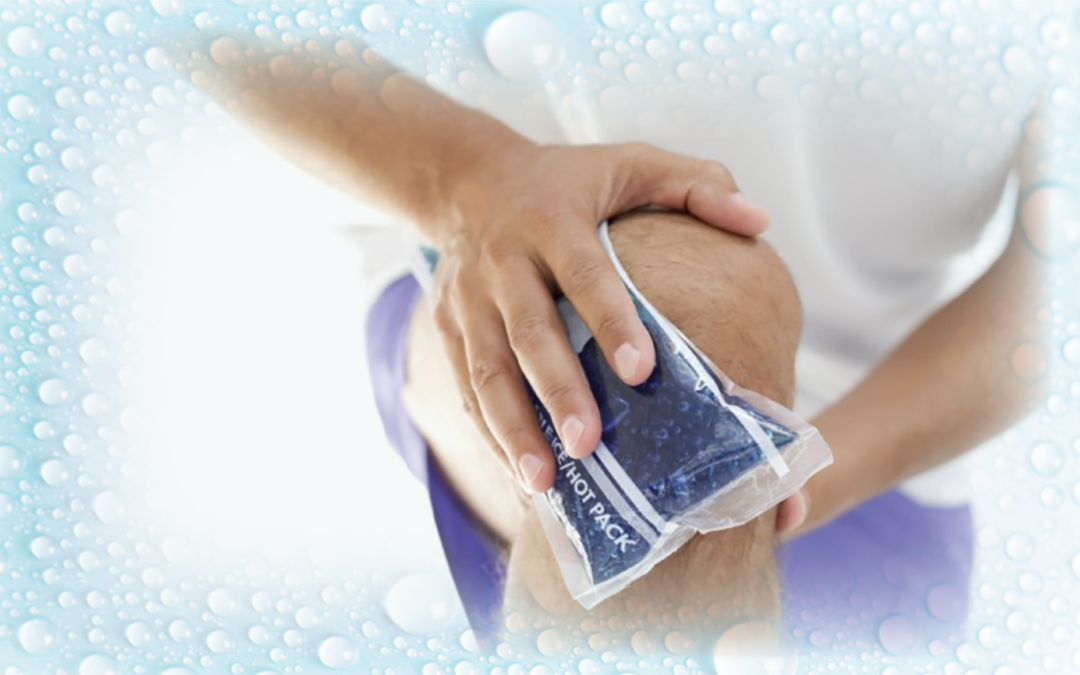Your Cart is Empty

Icing Injuries
3 min read
What I’m going to relay in this blog will be a surprise to many of you! I’m sure most of you have heard or were told to follow the RICE protocol at one point in your lives. From a young age, I was always taught if you have a sprain, strain, bad bruise etc., put some ice on it! I was told that the ice would bring down the inflammation and begin the healing process. I'm here to tell you that this information is incorrect and often misunderstood/interrupted.
So where did the RICE protocol come from?
In 1978 a physician by the name of Dr. Gabe Mirkin coined the term RICE (Rest, Ice, Compression, Elevation) in The Sports Medicine Book. Since then, the medical community has made this a staple for almost all acute injuries. If I were to approach and ask most medical practitioners why they recommend me to use ice for let’s say an ankle sprain, they would likely say because it will reduce pain, inflammation, and swelling. This statement is not incorrect, and there is no denying that when you apply ice to a place of pain, there will be some temporary pain relief, but here’s the kicker… Just because you are experiencing less pain does not mean that you are “fixing” the injury you may be doing more harm than good.
Fast forward to 2013 the same physician who created the term RICE, withdrew his original statement in the second attention of the book Iced, stating “Subsequent research shows that ice can delay recovery. Mild movement helps tissue to heal faster, and the application of cold suppresses the immune responses that start and hasten recovery. Icing does help suppress pain, but athletes are usually far more interested in returning as quickly as possible to the playing field. So, today, RICE is not the preferred treatment for an acute athletic injury.

Inflammation and Swelling
If there is one thing that you should remember to take away from this blog it would be that inflammation and swelling are a normal response to injuries and are often needed to initiate healing processes. Without getting too far into the weeds of science jargon, healing requires inflammation, and it is an essential response following injury. In fact, a lack of inflammation blunts the healing process and contributes to poor muscle regeneration! This “blunting” of the healing process occurs when you use ice! Placing ice on an injury essentially places a roadblock in front of the white blood cells trying to get to the injured area and stunt the natural inflammation process from occurring. While you think you’re helping the healing process by placing a bag of ice on your body, you’re actually delaying it from ever starting by preventing the body from doing what it wants and needs to do.
What to do instead?
Movement is medicine! Exercising in a relatively pain-free manner is the golden ticket to healing faster. Keep in mind, that you most certainly can overdo it and set yourself back even further, but generally speaking, some light, slow, and controlled movements with load shows to improve the speed and efficiency of recovering. The goal is to apply some stimulus and blood flow, without “ticking it off” too much. Start at the lower end of the spectrum with volume and load, and slowly increase the volume and load from session to session as long as you are not seeing an increase in pain.

Takeaways
2. Movement is medicine and can speed up the recovery process
3. Proper movement and loading>Icing
Side note
Deliberate cold exposure and icing an injury are two different protocols and often are used for different reasons. If you have any questions regarding deliberate cold exposure please check out this article: Benefits Of Deliberate Exposure
Subscribe
Sign up to get the latest on sales, new releases and more …
